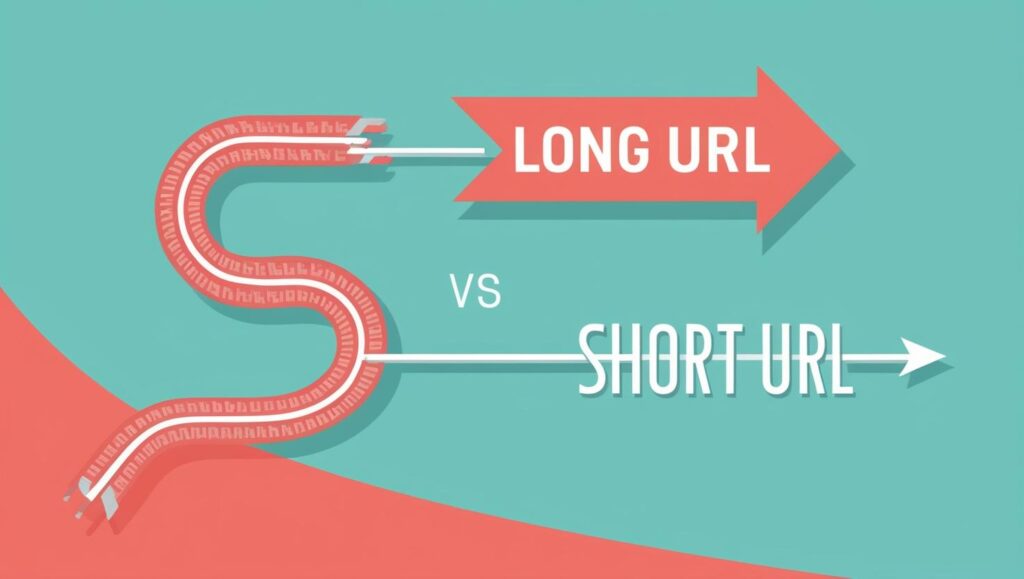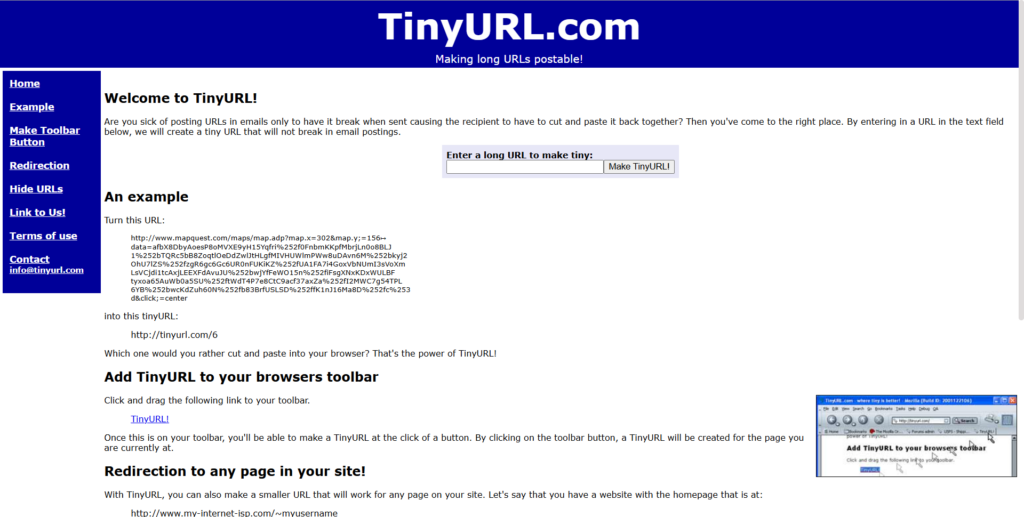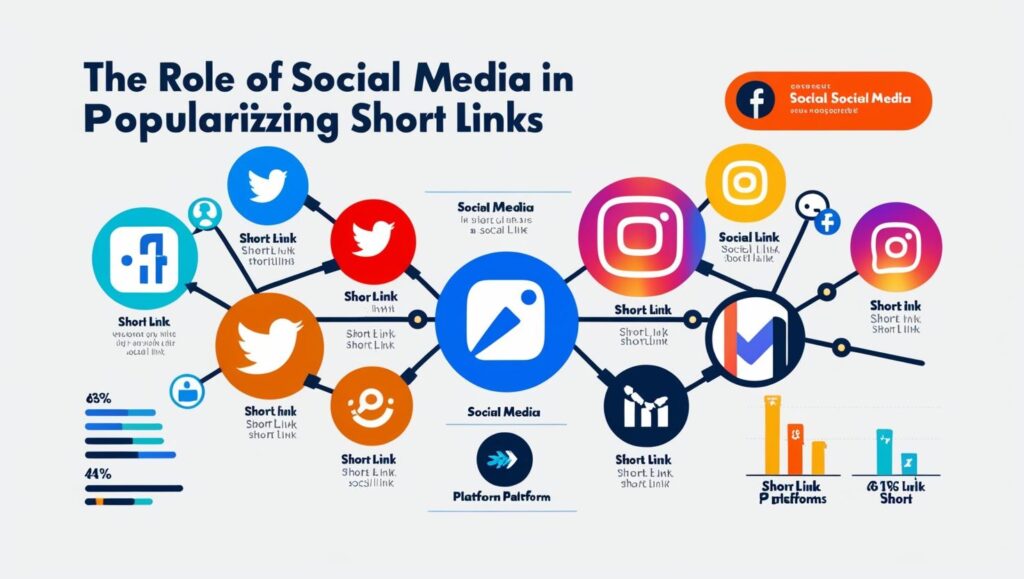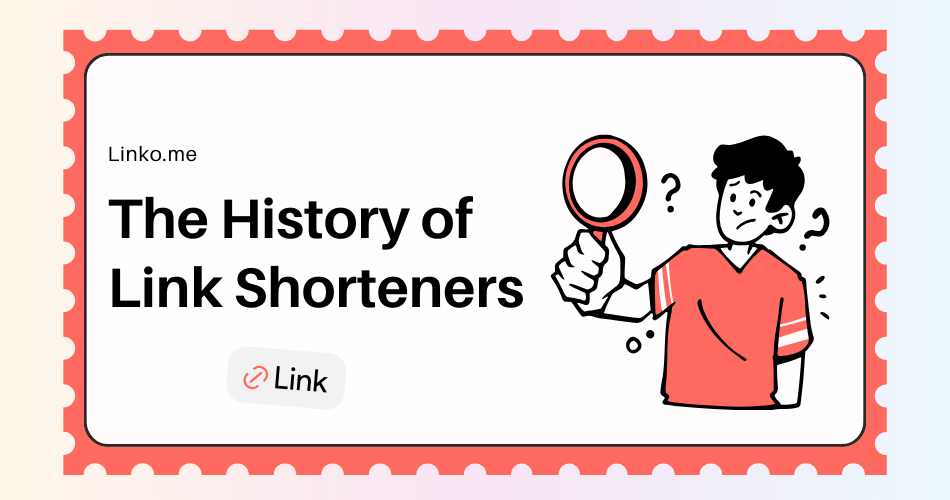Have you ever come across a web address that looked like a long string of random letters and numbers?
Like this one,
https://www.example.com/articles/category/technology/web-development/2025/02/the-future-of-url-shortening-and-its-impact-on-digital-marketingWell, that’s a URL.
Before link shorteners existed, sharing these lengthy addresses—especially on platforms like X (Formarly Twitter)—was often a major challenge.
Link shorteners solve this problem by converting “long URLs” into concise, memorable links. This not only makes sharing easier but also allows marketers to track clicks and engagement metrics.
Why are link shorteners important?
They help by:
- Saving Space: Crucial on character-limited platforms like X (Twitter) and Bluesky.
- Boosting Analytics: Detailed tracking helps measure user behavior and campaign performance.
- Enhancing Appearance: Short links look cleaner, more professional, and are easier to remember.
- Improving User Experience: Readers can quickly understand and share them without confusion.
In this guide, we’ll dive deep into the history of Link Shorteners, evolution, and digital marketing impact of link shorteners, answering common questions and offering practical insights along the way.

The Origins of URL Shortening
Before link shorteners existed, people struggled with long URLs in emails, newsgroups, and early websites. These lengthy addresses were not only unattractive but also prone to errors when copied and pasted.
In 2002, web developer Kevin Gilbertson recognized this problem and created TinyURL—the first notable URL-shortening service.
TinyURL worked simply:
You paste your long URL into a form on the website, and it returns a much shorter link that redirects to the original page.
This simple solution made sharing links more reliable and efficient, quickly gaining popularity among early internet users.
“TinyURL transformed online sharing by turning long, complicated links into simple, user-friendly addresses.”
— Reflecting on early internet innovation
TinyURL set the stage for a host of similar services that would soon emerge to address various needs in link management and analytics.

The Evolution of Link Shorteners
After TinyURL paved the way, the market exploded with new link shortening services, each bringing innovative features that helped them stand out.
Here are several notable link shorteners that emerged after TinyURL, along with the unique benefits they introduced:
1. Bitly
Launched in 2008, Bitly quickly became a favorite among social media users and digital marketers.
- Key Innovations:
- Advanced Analytics & Tracking: Bitly allowed users to see real-time click data, geographic locations, and referral sources.
- Customization Options: It enabled businesses to create branded short links using custom domains (e.g., nyti.ms for The New York Times).
- Impact: Bitly’s feature-rich platform made it the go-to choice for marketers, especially on Twitter, until Twitter eventually developed its own shortening service (t.co) in 2011.
2. Goo.gl
Google in 2009 intruduced Goo.gl URL shortener brought the resources of one of the world’s largest tech companies into URL shortening.
- Key Innovations:
- Seamless Integration: Goo.gl integrated smoothly with other Google products like Gmail and Google Analytics.
- Enhanced Features: Offered detailed click tracking and automatic QR code generation.
- Impact: Although highly popular, Google eventually phased out Goo.gl in favor of Firebase Dynamic Links—a move that underscored the need for even more advanced and integrated link management solutions.
- Note: On August 25, 2025 Google will shut down goo.gl link shortener completely and all goo.gl links will be disabled.
3. Ow.ly
Launched by Hootsuite in 2009, Ow.ly was designed to complement its social media management platform.
- Key Innovations:
- Integrated Management: Ow.ly allowed users to shorten and track links directly within the Hootsuite dashboard.
- Unified Reporting: It provided comprehensive insights across multiple social channels, simplifying content strategy for marketers.
- Impact: Ow.ly became essential for social media managers who needed an all-in-one solution for scheduling posts and monitoring engagement.
4. Rebrandly
Emerging in the early 2010s, Rebrandly focused on branding from the start.
- Key Innovations:
- Branded Links: Rebrandly lets users create short links that include their own brand name, thereby enhancing recognition and trust.
- User-Friendly Interface: The platform streamlined the process of registering and using custom domains for link shortening.
- Additional Features: It also offers advanced tracking capabilities and even emoji integration to make links more engaging.
- Impact: For businesses looking to maintain a consistent online identity, Rebrandly turned every link into a branding opportunity, not just a redirection tool.
5. T.LY
Launched around 2018, T.LY capitalized on the need for ultra-short links.
- Key Innovations:
- Ultra-Short Domains: Leveraging the .ly domain (Libya), T.LY produces exceptionally short URLs.
- Simplicity and Speed: Its clean interface and fast redirection ensure that users have a seamless experience.
- Modern Features: Offers basic analytics and customization options to meet the needs of modern digital marketers.
- Impact: T.LY gained traction among influencers and marketers who valued a minimalist, efficient approach to link shortening.
6. Linko
Emerging as a versatile player, Linko stands shoulder-to-shoulder with other leading link shorteners.
- Key Innovations:
- Integrated Link Management: Linko not only shortens URLs but also offers additional functionalities such as QR code generation and link-in-bio features—perfect for bloggers, influencers, and OnlyFans marketers.
- Ease of Use: It provides a user-friendly interface that simplifies link management, making it a competitive choice for those who need reliable, all-in-one solutions.
- Impact: By combining robust link shortening with modern features, Linko has established itself as a leading option for anyone looking to streamline their digital marketing efforts.
7. Additional Mentions: Sniply, Cuttly, Dub.co, and Short.io
Alongside the major players above, several other services have made their mark in the link-shortening landscape:
- Sniply:
- Unique Twist: Sniply not only shortens links but also lets you add a custom call-to-action overlay on the destination page. This unique feature helps drive conversions by engaging users as they click through.
- Cuttly:
- Features: Cuttly provides robust analytics, customizable links, and a straightforward interface, making it a popular choice for users seeking both simplicity and useful metrics.
- Dub.co:
- Focus on Security: Dub.co emphasizes secure redirection and data protection, catering to businesses that prioritize user trust and safety.
- Short.io:
- Versatility: Short.io allows users to create branded short links using custom domains, offering detailed tracking and a suite of integrations with popular platforms. Its versatility makes it a strong contender for businesses of all sizes.
These additional services expand the options available to users and demonstrate the diversity in the market. Each one offers unique features, and by evaluating them, marketers can select the solution that best fits their needs.
The Role of Social Media in Popularizing Short Links
Social media platforms have played a critical role in the adoption and evolution of link shorteners. Here’s why:
Twitter’s Character Limit:
When Twitter originally limited tweets to 140 characters (later expanded to 280), users struggled to include lengthy URLs. Link shorteners solved this problem by saving valuable space, allowing users to focus on their message.
Broader Social Media Impact:
Platforms such as Facebook, Instagram, and SMS all benefit from short, clean links that look appealing and are easier to share.
Data-Driven Engagement:
With built-in analytics, social media managers can monitor link performance and adjust strategies accordingly. This insight-driven approach helped services like Bitly and Ow.ly gain widespread adoption.
Viral Potential:
Short, memorable links are more likely to be shared, increasing the chance of viral content and driving significant organic traffic.
In short, social media not only necessitated the use of link shorteners but also helped them evolve into indispensable tools for digital engagement and marketing.

Technological Advances in URL Shortening
Modern URL shorteners offer far more than just a way to trim down a URL. Here are some of the key technological advancements:
Custom Aliases and Branded Links:
Users can choose custom endings for their URLs (e.g., domain.com/YourBrand), which reinforces brand identity and improves trust.
Robust Analytics:
Advanced platforms now track detailed metrics, such as click-through rates, geographic data, device types, and referral sources—data that helps marketers fine-tune their campaigns.
API Integrations:
Developers can integrate link shortening features directly into websites and apps using APIs. This automation ensures consistency and improves efficiency in content management.
QR Code Generation:
Many services (e.g., Goo.gl, Rebrandly, and Linko) automatically generate QR codes, enabling smooth transitions between online and offline marketing.
Mobile Optimization:
With mobile browsing on the rise, link shorteners have optimized their platforms to ensure fast, reliable performance on smartphones, enhancing user experience across all devices.
These technological advances not only simplify link management but also empower businesses with data-driven insights to boost their digital marketing strategies.
Link Shorteners in Digital Marketing
Link shorteners are now integral tools in digital marketing. Their benefits extend beyond mere URL shortening:
Enhanced Tracking and Analytics:
With platforms like Bitly and Linko, marketers can monitor click data, geographic distribution, devices type, browsers, users’ languages, and referral sources. This data is invaluable for refining marketing strategies.
Brand Consistency:
Branded links, such as those created with Rebrandly, help maintain a consistent online identity and build trust among users. When a link includes your brand name, it immediately reassures the user of its authenticity.
Higher Engagement Rates:
Clean, easy-to-read links encourage more clicks and social shares, which can lead to increased organic traffic.
SEO Benefits:
While the short link itself isn’t a direct ranking factor, the enhanced user experience and longer dwell times from engaging content can indirectly boost SEO.
Cost Efficiency:
By consolidating quality content into comprehensive pieces, like pillar pages, businesses can reduce content creation costs while simultaneously boosting authority and engagement.
Social Sharing:
Studies show that long-form content (which often includes several well-integrated short links) gets more social shares. Increased social sharing translates to more organic traffic and higher rankings.
When used strategically, link shorteners help businesses optimize their online presence, streamline digital campaigns, and effectively manage content across various platforms.
The Future of Link Shortening
The world of link shorteners continues to evolve, and here are some trends we expect to see:
Dynamic Links or Smart Routing:
Future link shorteners may offer dynamic URLs that adjust based on user behavior, location, or device. For instance, a single short link might redirect users to different landing pages depending on their geographical region.
Enhanced AI Integration:
Artificial intelligence may further refine how these tools analyze user data, enabling more personalized content recommendations and automated link management.
Stronger Security Measures:
As cyber threats increase, future platforms are likely to incorporate advanced security features to protect users from phishing and malicious redirects.
Deeper Platform Integration:
Link shorteners will likely become more integrated with other digital marketing tools, offering seamless data sharing between content management systems, social media platforms, and analytics tools.
Sustainability in Digital Marketing:
Future innovations might focus on reducing digital clutter and streamlining data management, ensuring that link shorteners not only improve efficiency but also contribute to a more sustainable digital ecosystem.
These trends will ensure that link shorteners remain a critical component of digital marketing strategies, adapting to new challenges and opportunities as they arise.
Conclusion
Link shorteners have come a long way from the early days of TinyURL.
They started as simple solutions to solve the problem of unwieldy URLs and have evolved into sophisticated tools that are integral to digital marketing.
Services like Bitly, Goo.gl, Ow.ly, Rebrandly, T.LY, and even Linko each offer unique features, from robust analytics, A/B testing, deep linking, hide referrer, link disguiser, UTM Builder, and branded links to ultra-short URLs and integrated QR code functionalities.
In this comprehensive guide, we explored:
- The Origins of URL Shortening: How TinyURL solved the initial problem.
- The Evolution of Link Shorteners: A detailed look at several major players and what they introduced.
- The Role of Social Media: How platforms like Twitter and Facebook spurred the demand for short links.
- Technological Advances: The features that modern link shorteners provide, such as custom aliases, API integrations, and mobile optimization.
- Digital Marketing Benefits: How these tools enhance tracking, engagement, SEO, and overall brand performance.
- Future Trends: Predictions for dynamic links, AI integration, improved security, and more.
FAQs
What is a link Shortener?
A link shortener transforms a long URL into a shorter version that redirects to the original page. This makes sharing easier and provides valuable tracking data.
Who created the first link shortener and why?
Kevin Gilbertson created TinyURL in 2002 to address the problem of lengthy URLs that were difficult to share reliably, especially on platforms with strict character limits.
What are some popular link shorteners that emerged after TinyURL?
Notable services include Bitly, Short.io, Ow.ly, Rebrandly, T.LY, and emerging platforms like Linko, which offers integrated solutions such as QR code generation, link-in-bio, and file sharing functionalities.
How do link shorteners benefit digital marketing?
They help track clicks and user behavior, improve brand consistency with custom links, boost engagement through cleaner visuals, and indirectly support SEO by enhancing dwell time and user experience.
Can link shorteners improve my SEO?
While the shortened link itself isn’t a direct ranking factor, the additional data and improved user engagement they provide can support higher rankings on search engines.
Are there any security risks with using short links?
Yes, since short links can obscure the destination URL. It’s important to use reputable services and, when possible, enable link previews to show users where they will be redirected.
What does the future hold for link shorteners?
Future trends include dynamic and personalized links, deeper AI integration, enhanced security features, and greater integration with other digital marketing platforms.


Comments